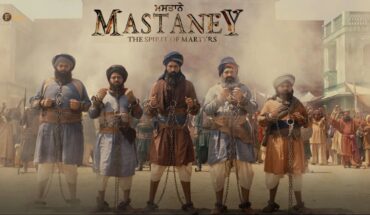The Society for the Study of the Multi-Ethnic Literatures of the World (MELOW) organised a three day International Conference at Goa to celebrate the 100th anniversary of T. S. Eliot’s masterpiece The Waste Land.
The Waste Land is arguably even more relevant now and finds deep resonance today than it was when it was written 100 years ago in 1922. The Vice-Chancellor of Shoolini University, Prof. Atul Khosla who was the chief guest stressed the importance of poetry and bringing it back into our lives. He spoke about his strong belief in the amalgam of creativity and science and how creativity powers output. He appreciated the efforts of MELOW in pushing the frontiers of literature.
Prof. Manju Jaidka, President, MELOW, in her presidential address familiarized the delegates with the history of the society which has been holding conferences for the past twenty-five years. In her address titled, ‘Many People, Many Tongues: The Plurality of Perspectives in The Waste Land.’ Prof. Manju Jaidka traced the critical reception of The Waste Land when it was written. She also welcomed Professor Sripad Bhat, Department of English, University of Goa, Goa to the conference.
Prof. Manpreet Kang, Indraprastha University, New Delhi and Secretary, MELOW introduced the audience to the theme and the twentieth-century poet, critic and essayist, T. S. Eliot at the 22nd MELOW International conference held from September 23 to 25.
In the plenary session chaired by Prof. Roshan Lal Sharma, Central University of Himachal Pradesh, Dharamshala, the first speaker of the session- Sanjay Mukherjee, Prof. Department of English and CLS, Saurastra University, Rajkot, Gujrat, gave his insights on The Sense of ‘Shantih’ in The Waste Land. Jason Wiens, Department of English, Associate Dean, Faculty of Arts, University of Calgary, discussed the Appropriative Poetics in The Waste Land and the multiplicity of voices which enter the poem.
Kalpana Purohit, Professor and Head, Department of English, Jai Narain Vyas University, Jodhpur, made a presentation on Traversing Through Eliot’s The Waste Land: A Cultural and Philosophical Kaleidoscopic Views. Her paper reconstructed Eliot’s The Waste Land from the cultural and philosophical point of view.
The session chaired by Dr Roshan Lal Sharma focused on the Isaac Sequeira Memorial Lecture K. Narayana Chandran, Department of English, University of Hyderabad presenting his paper poke on Shoring Fragments of the Waste Land Centennial and approached The Waste Land as a post-modern poem written in the Modernist era. The ISM Lecture was in the memory of Prof. Isaac Sequeira who was a great support in the initial years of MELOW. Every year MELOW awards a cash prize and a certificate to the best paper presented by a young scholar at the conference.
Ashish Kumar Pathak, Assistant professor, Department of English, BHU discussed the contemporary Environmental Crisis and The Ecological Wisdom in The Waste Land. The second speaker,Sayantani Sengupta, Department of English, The Bhawanipur Education Society College examined Eliot’s Detective and Rowson’s The Waste Land. Deeksha Vats, presented a paper on “The Waste Land” and the stage; relevance of Art in a Dilapidating world. Sreejit Datta made an interesting discussion on “The Waste Land” as a cross-civilizational Dialogue. The Isaac Sequeira Memorial (ISM) prize was awarded to Sreejit Datta, Assistant Professor, Rishihood University, Sonipat for his paper titled ‘Reading T.S. Eliot’s The Waste Land as a Cross-Civilizational Dialogue.
In the session chaired by Prof. Sanjay Mukherjee, two presenters in this session were Bipasha and Navreet. The first presenter, Bipasha, presented a paper titled “Vision of Tiresias: Desire and Disability in The Waste Land. The second presenter, Navreet Sahi, presented a paper titled “Journeying into the ‘Mental Wasteland’: A Psychopathological Reading of T.S. Eliot’s Th Waste Land.
The session chaired by Dr. Navreet, Pia Bakshi, the first presenter, suggested that the presence of dead characters in The Waste Land allude to the impossibility of a return to the past in her paper titled “Nostalgia and Spectrality in The Waste Land. Rajguru Santosh, the second presenter explored the aesthetic aspect of the poem in his paper titled “Aesthetics in T. S. Eliot’s The Waste Land: A Dantean Approach.” Sree Prasad presented his paper “Human Stage of Musical Noises: The Waste Land as a Rhyme of Shambolic Modernity” in which he focused on the significance of musicality taking into account Eliot’s thoughtful and pragmatic metrical composition. Subham Dutta, presented a paper titled “Spatiality, Narrative and the Poetics of Representation in The Waste Land” where he explored the relationship between narrative and spatiality focusing on the fluid representation of “I” narrator.
At the session chaired by Dr. Brian, Vaishali Sharma, presented a detailed account of the relevance of the notes in the poem to make the reader aware of the satire in the work in her paper titled “Hollow and Ignored Voices in the Unattended and Plaintive Waste Land.” The second presenter Sukriti, presented her paper titled “Fragments of Past and Present: Use of Allusions and Mythologyin T. S. Eliot’s The Waste Land in which she examined the various temporal and cultural contexts that are woven together in the poem.
Surabhi Chandan, made a comparative study of Margaret Atwood’s Oryx and Crake and Eliot’s The Waste Land, in her paper titled “Environmental Apathy and Denial to Change: A Comparative Study of Oryx and Crake and Eliot’s The Waste Land.
Dr. Vandana Sharma, presented her paper titled “What does the Thunder Say? 3 Da’s to Shanti Paath in The Waste Land. She explored the Vedic connection of the poem also examining Eliot’s antidote to spiritual bleakness for the restoration of the individual. The session chaired by Prof. Jap Preet had two presenters. The first presenter, Tarika’s paper titled “Antiquated Indian Voices in European Modern Cities: The Uses of Planetarity in The Waste Land explored the postcolonial and planetary engagement of the Western and Oriental landscapes.
The last presentation of the day was made by Sumegha. Her paper titled “Mapping the Contours of Changing Social Spaces in The Waste Land” dealt with the concept of social spaces and how it relates to the images of transforming social spaces in The Waste Land.
In session chaired by Neela Sarkar, the first presentation was made by Amitrajeet Mukherjee, “Trenches in the Mind: The Waste Land and T. S. Eliot’s Legacy as a Wartime Poet.” Brian Mendonca’s “The Waste Land as a Palimpsest of the Pandemic” posited that The Waste Land was a poem written during the pandemic and drawing examples from the text itself established a coherent thesis on the same.
Hariom Singh’s “Modernity as ‘Other’: Technology and Gender in T. S. Eliot’s The Waste Land. The paper sought to elucidate “the impact of the industrial revolution on the female sex. Ishita Sareen presented a paper titled “Topophrenic Spatiotemporalities in The Waste Land: Revisiting Eliot’s Poem as a Produced Space.” Jap Preet Kaur Bhangu in her paper titled “T. S. Eliot’s The Waste Land. A Metaphor for the Contemporary World” analyzed the poem as an attempt to find a sense of a multicultural creation.
Manika Ahuja was the final presenter. Her paper was titled, “Allusions to Illusions: The Influence of Indian Thought on T.S. Eliot” examined the intent of Eliot’s Indian connection from an Orientalist perspective. It was followed by an engaging discussion on the relevance of literature, the significance of literary allusions and the relevance of Eliot in the modem world and the need for a Dalit interpretation of the poem.
Neela Sarkar and Bulu Mukhopadhay presented their paper “Traversing The Waste Land with T. S. Eliot and Bishnu Dey” drew incredibly insightful parallels between the British-American poet and the Bengali poet. The second paper was presented by Nitika Gulati. Her paper “Mapping the Modem Mind: Mental Health Echoes in The Waste Land” drew relevant examples from the poem to show how the poem can be read as an indirect and a direct reflection on and of mental health issues afflicting humanity both in the past and the present. Rajesh Williams, through his paper “Echoes of The Waste Land in Literature, Popular Culture and Art highlighted the relevance of Eliot’s imagery in the modem world and how echoes of it may be seen in contemporary literature, art as well as popular culture across the globe.
In the session chaired by Santosh Rajguru, Shehreen Ataur Khan’s novel presentation titled “Reading Banksy’s Street art through the verses of The Waste Land” included the print outs of the paintings being handed out. Mary Mohanty, the second speaker, in her paper “Impact of The Waste Land on Odia Literature: Revisiting Guru Prasad Mohanty’s Kalapurusha” gave us a glimpse into Odia literature, specifically Kalapurusha.
The session chaired by Prof. Anil Raina had three presenters. Shimi Moni Doley presented a paper on “Eliot’s The Wasteland: Deconstructing the Morality of Mankind.” Smita Verghese presented her paper on “Sustenance, Indulgence, or Decadence: Edibles in T. S. Eliot’s The Waste Land.” The third paper was presented jointly by Srishti Sharma and Sakshi Sundaram titled “The Waste Land and Its Cinematic Afterlives: Critical Analysis of Select Diegetic Readings of the Poem. In the session chaired by Dr. Jason Wiens, the first presenter, Prof. Manpreet Kaur Kang, who presented her paper titled “Madame Sosostris and Her Tribe: A Study of the Women in The Waste Land.” The speaker aimed to take a re-look at The Waste Land from the lens of contemporary feminist debates to study the women in the poem who have been used by Eliot to portray the agony, horror and decay of the modern world.
Prof. Roshan Sharma presented his paper “Upanishadic Notions of Datta, Dayadhvam and Damyata as Antidotes to Varied Waste Lands.” The speaker intended to analyse Upanishadic notions of Datta, Dayadhvam and Damyata as antidotes to diverse kinds of desolate and hopeless wastelands as depicted in the poem, He further delved into the ‘why’ of Eliot’s considered choice of them as the only viable and sustainable correctives. At the concluding session of the conference the report of the three days of the conference proceedings was read by Dr. Navreet Sahi while the report was compiled by Navreet Sahi with inputs from Surbhi Chandan and Sayantani Sengupta Certificates were handed over to all the participants and their feedback was sought. Prof. Manpreet Kaur Kang announced that the selected papers would be published in the journal MEJO after a double-blind peer review.






